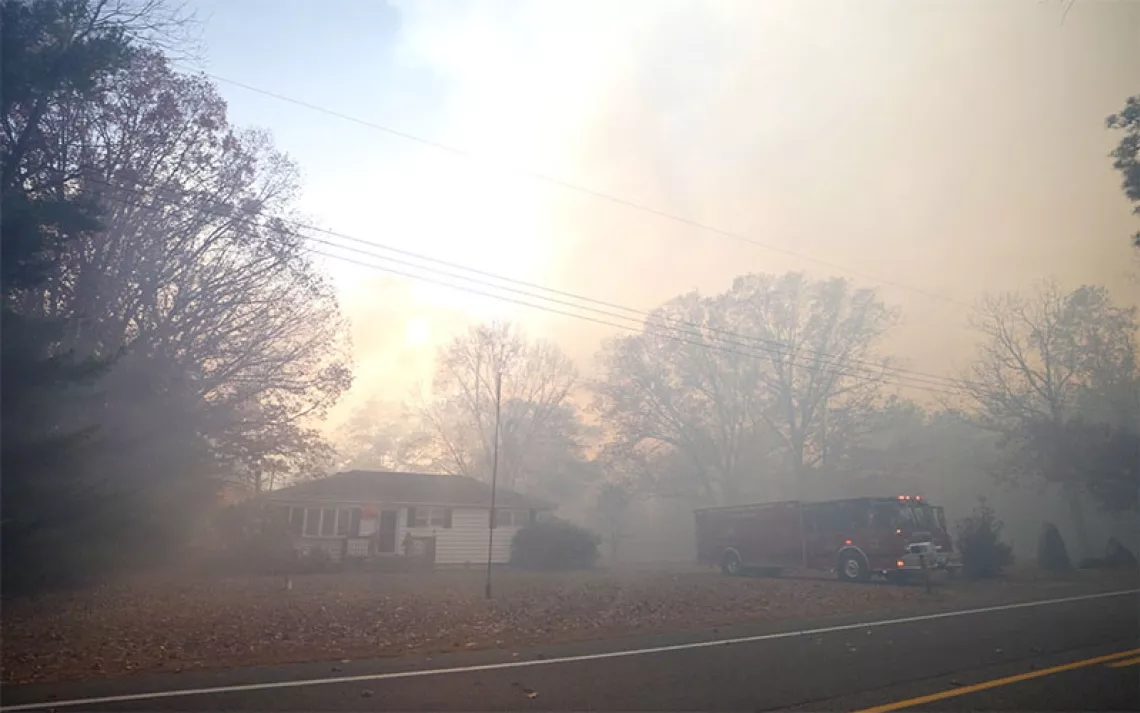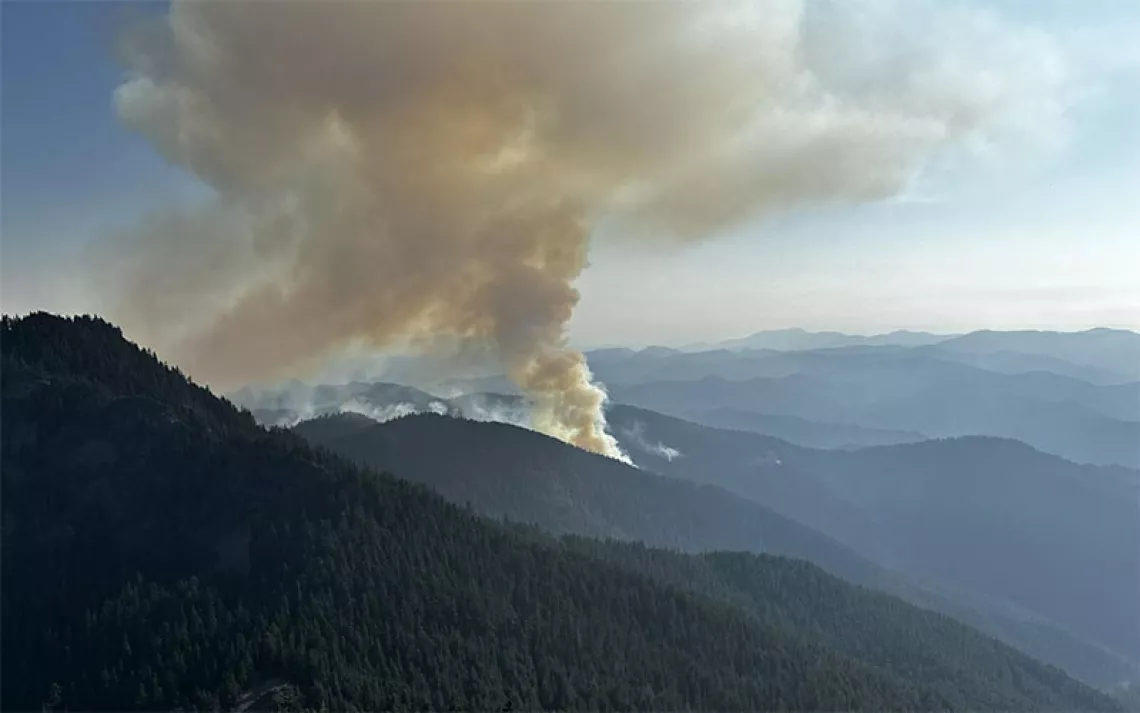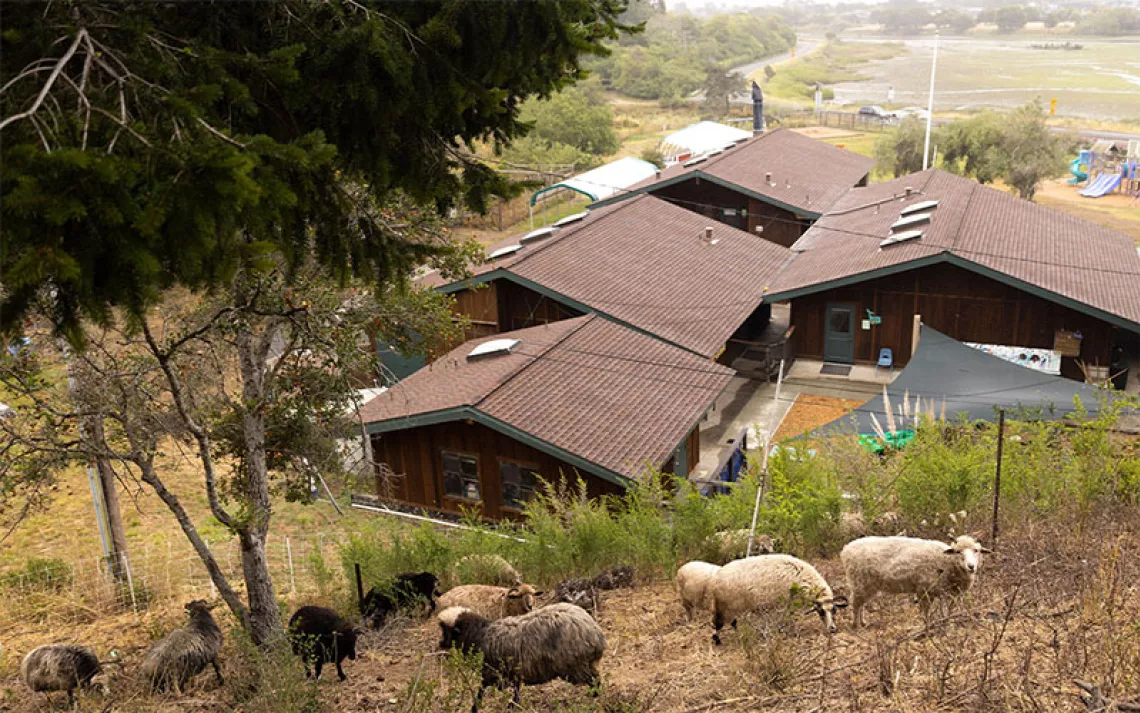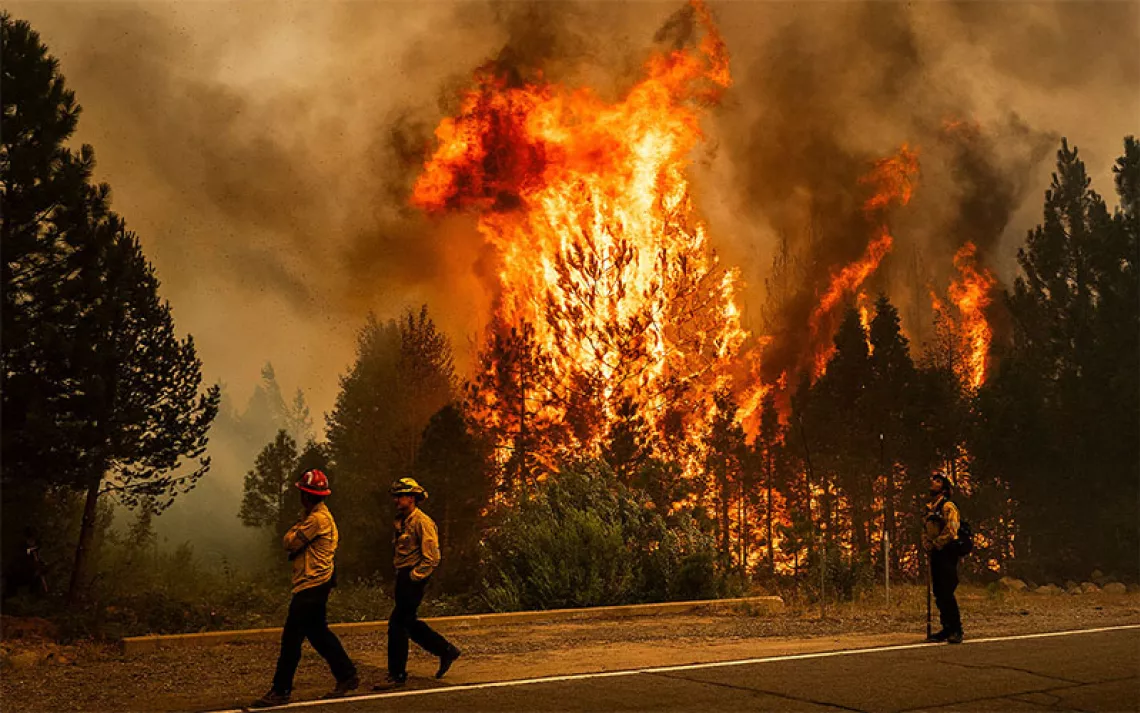Unauthorized Drones Are Making Wildfires More Destructive
An alarming trend, and confusing regulations, hamper firefighting efforts across the country
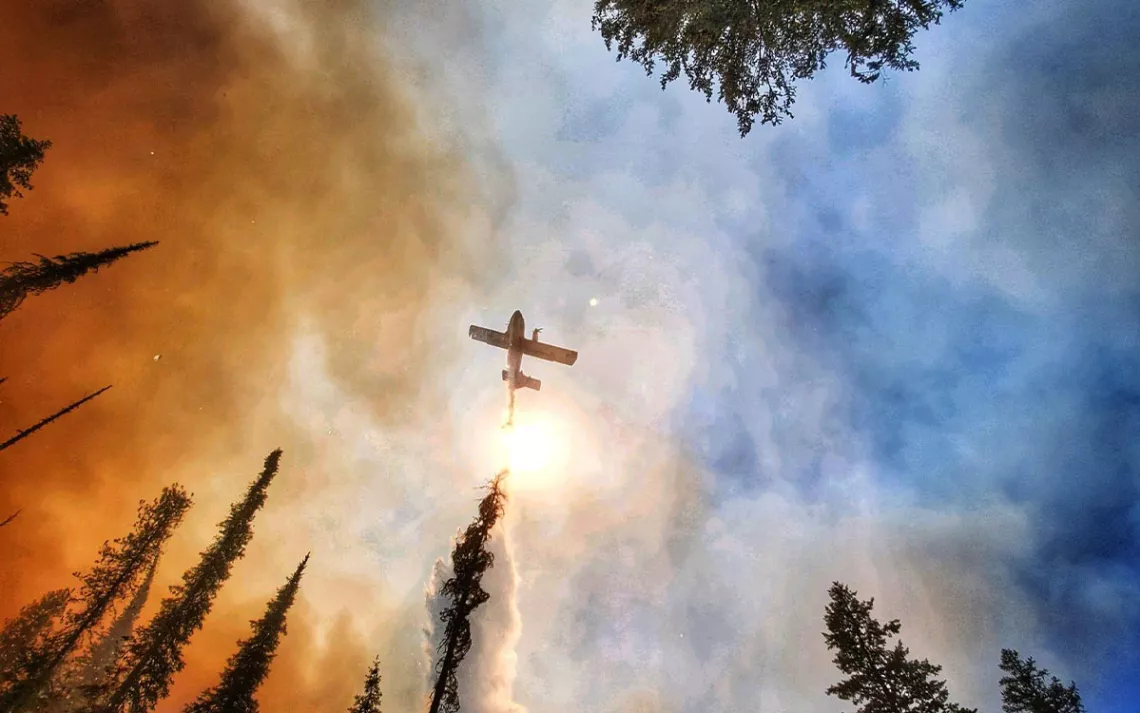
A large air tanker makes a water drop on the Summit Trail Fire in Washington. | Photo by Colville Agency/BIA
In 2022, a wildfire tore across 18 acres of Mt. Helena in northwestern Montana. As crews raced to tame it, an unauthorized drone flew into the area, bringing their air operations to a grinding halt. Unknown drones pose risks to aerial firefighting operations, so the Montana crew responded by following procedures shared by many state and federal fire crews.
Officials found the owner of the drone in just under 15 minutes, but leaving firefighters on the ground to work without aerial support for even that short span of time meant a beloved city park burned. It also put the capitol building at risk less than three miles away.
“[The fire] was right on the doorstep of town,” said Cory Calnan, the deputy fire protection bureau chief for the Montana Department of Natural Resources and Conservation of Fire Protection. “Although it may seem rather benign flying a small little toy drone over a wildfire for a couple of pictures, there are very real, serious consequences to that.”
On average, 23 conflicts with unmanned aerial systems are reported annually within the wildland fire community, with a record 41 reported in 2016. Because firefighting aircraft—such as helicopters, air tankers, and smoke jumpers—can fly at the same altitude as many hobbyist drones, the risk of a collision will usually halt all aerial firefighting efforts until the drone has cleared the area, leaving ground crews without critical support. Federal and state land management agencies alike have reported incidents.
“As drones become less expensive—more available to the public—they’re becoming more of an issue on wildland fire incidents,” said Marshall Thompson, a deputy division chief of external affairs who represents the Bureau of Land Management Fire on an interagency wildfire task force.
Depending on how a drone enters a wildfire-fighting operation, all aerial operations might be forced to shut down or be redirected.
"We might move our aircraft from a larger incident to a lower priority, perhaps ground them, or move them to a different altitude until the intrusion has cleared the airspace,” said Cliff Chetwin, a former wildland fire manager for the National Park Service and the agency’s first regional aviation manager. “Same thing with a drone. It’s just a machine in the air.”
Thompson warns that unauthorized drone operators can still disrupt aerial firefighting resources even when they can't see such work in action. Aerial support traveling to a fire from another area could be turned back or redirected to a smaller fire, for example, to avoid the risk the drone poses. As federal and state agencies themselves increasingly use authorized drones to help with ignition processing, mapping, and hot-spot detecting, it becomes more critical than ever that no unauthorized drones are in the airspace over a fire.
“When you have someone looking at an incident that doesn’t have large aviation equipment flying around, they think it’s OK to go ahead and fly their drone around the fire, but we might have our own drone equipment actively engaged,” said Thompson.
Unlike crewed aircraft, drones’ fields of vision are restricted by a single camera lens, making it more difficult to see what’s immediately surrounding them, and more likely that two drones—authorized and unauthorized—might collide.
Under normal conditions, each federal and state land management agency sets its own rules for how and where recreational users can fly a drone. The National Park Service, for instance, bans drones within park boundaries. The US Fish and Wildlife Service bans launching, landing, or disturbing wildlife within refuges. The Bureau of Land Management prohibits launching or landing in designated wilderness areas.
During wildfire conditions, to avoid any potential confusion these conflicting regulations might cause, all agencies cooperate via the National Interagency Fire Center, made up of fire officials from the Bureau of Land Management, the Bureau of Indian Affairs, the US Forest Service, the US Fish and Wildlife Service, the National Park Service, and state agencies. Wildfire incident commanders can request a “temporary flight restriction,” which is sent to the Department of Homeland Security for review, and to the Federal Aviation Administration for approval. The process is pro forma, usually granted quickly, and implemented within hours, if not less.
“Primarily the FAA sees these drones as aircraft. We don’t see them as toys,” said Kevin Morris, a spokesperson for the FAA. “We see them as operating aircraft in our national airspace.”
Drone pilots are always required to know the airspace they're flying in and whether a temporary flight restriction is in place. The Department of Defense sends out such alerts through its Notice to Air Missions system, and the FAA’s B4UFly service provides a number of mobile and desktop resources. All recreational drone pilots are also required by law to pass a test the FAA administers called TRUST and to show proof of passing it to law enforcement officials if asked. The test includes information on temporary flight restrictions and wildfires.
In previous generations, the primary culprits of unauthorized intrusions into firefighting operations were small crewed aircraft, such as Cessnas, not small, uncrewed systems that can be purchased online or in most superstores. But the procedures for dealing with an unauthorized intrusion have stayed nearly the same for decades.
“The difference is a drone is a machine that doesn’t have a pilot onboard to make human decisions. It doesn’t have communication capability, and until recently wasn’t even required to have a registration number on it,” said Chetwin. “Like anything in the regulatory space, the longer they’re around, the more laws they’ll have.”
Regardless of the type of aircraft, however, Congress has made interfering with firefighting efforts on public lands a federal crime and authorized the Federal Aviation Administration to impose civil penalties of up to $20,000.
“The FAA isn’t a law enforcement body in terms of a police department. We don't confiscate property. We don't handcuff people. We don't jail people,” said Morris. “But Congress made it so interfering with firefighting efforts on public lands can carry a criminal charge and prison time.”
The FAA and other state and federal agencies can issue additional fines and civil penalties including jail times and license suspension. In Montana, civilians using drones that interfere with firefighting efforts could be fined up to $1,500 and sentenced to up to six months in jail. Anyone seeing a drone operating illegally within a wildfire area should report it to the National Interagency Fire Center or their local police department.
But officials say regulations and threats of fines and prison aren’t the most effective way to keep drones out of wildfire operations.
“More laws and regulation on the enforcement side probably isn’t going to buy us more compliance. But the education piece on the front end is where we (could) see to gain the most,” said Calnan, the deputy fire protection chief in Montana. “A big ask the agencies would have of manufacturers of drones is making sure we’re including educational information. So when you open the box on a new drone, there should be something that should say, ‘Don’t fly over a wildfire or emergency area.’”
Calnan also recommends using social media to educate drone owners about how to use them responsibly. Social pressure among friends and fellow drone operators can also be a strong motivator.
“Regardless of who’s flying the drone—a hobbyist or a photographer—you’re putting people’s lives and property in danger when you fly over an incident,” Calnan said. “It’s just not worth it. Please keep those aircraft on the ground during an emergency situation, and take pictures from your phone standing a safe distance away instead.”
 The Magazine of The Sierra Club
The Magazine of The Sierra Club
